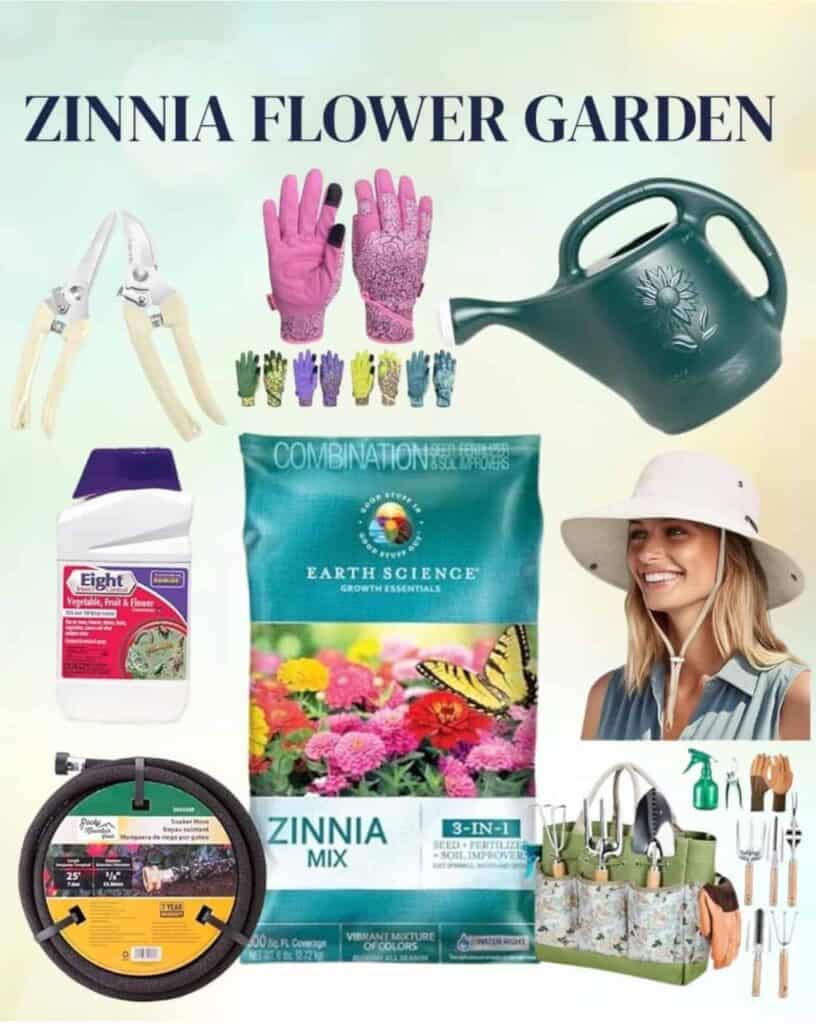7 Essential Tips for Growing Gorgeous Zinnias
It’s official! I’m a zinnia mom! Zinnias are a fantastic choice for people without a green thumb (like me) and why I’m sharing some essential tips for growing gorgeous zinnias.
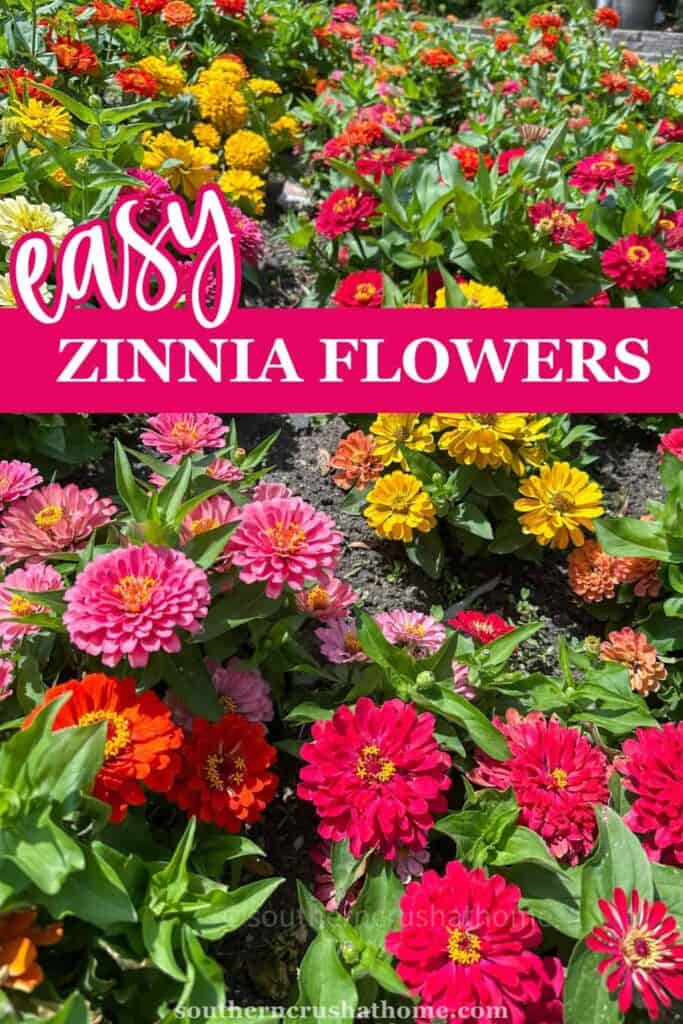
PIN this for later!
Zinnias are the perfect flower for adding bursts of color to your garden, and they’re super easy to grow. Whether you’re a seasoned gardener or just starting out, these cheerful flowers can thrive in a variety of conditions with minimal fuss. Let’s G-O!
This blog post contains affiliate links. The opinions are wholly my own from my own experience. I may earn a small commission from clicks through to the websites that end in a purchase.
Essential Tips for Growing Gorgeous Zinnias
All of this was made possible by my sweet friend Kelly Ratcliff over at Lazy Girls Garden Club. Check her out for unlimited tips and tricks!
Supplies Needed for Growing Zinnia Flowers
- Zinnia Seeds
- Watering Can
- Fertilizer
- Pruning Shears
- Gloves (for fun)
- Gardening Hat (for fun)
Ideal Planting Time for Zinnias
Timing is everything when it comes to growing zinnias. These bright and cheerful flowers thrive in warm weather, so it’s best to plant them after the last frost. Generally, you should aim for late spring to early summer.
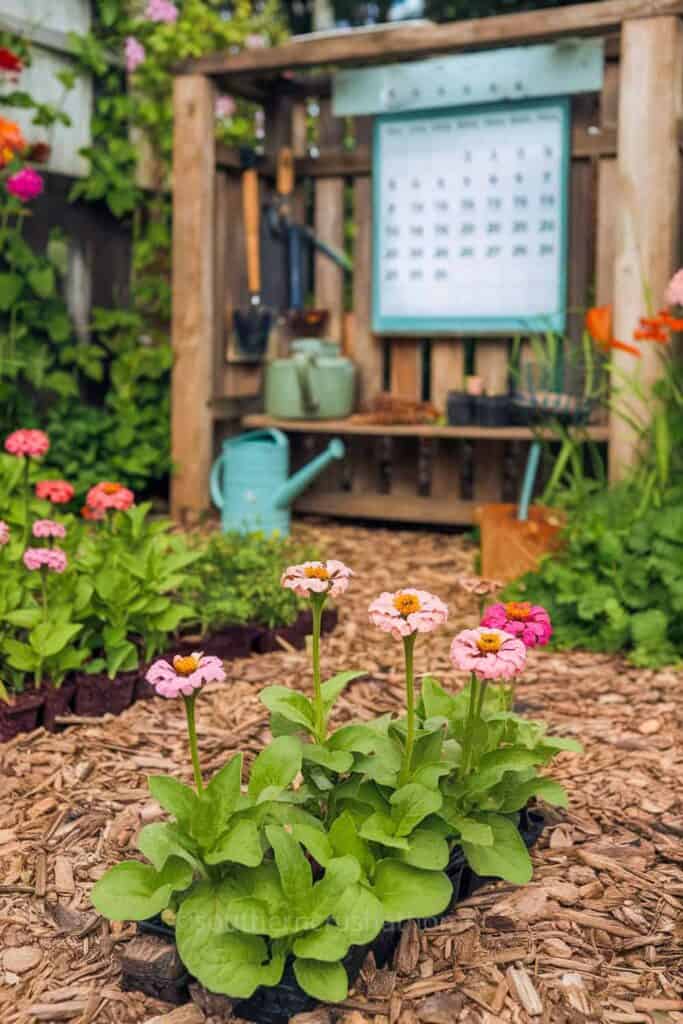
The image shows a lovely garden setup with zinnia seedlings ready for planting. The vibrant colors of the flowers, alongside the organized gardening tools and calendar, create a perfect scene for planning your zinnia garden. A calendar is a handy tool to track your planting times.
In most regions, waiting until the soil temperature is consistently above 60°F (15°C) is ideal. This ensures that your zinnias will have the best chance to flourish. If you’re in a cooler area, starting seeds indoors a few weeks before the last frost can give your plants a head start.
Keep an eye on local weather forecasts to avoid unexpected cold snaps. Once the risk of frost is gone, you’re all set to plant your zinnias and watch them bloom beautifully!
Preparing the Soil for Planting
Before you plant zinnias, it’s important to get the soil ready.
Start by choosing a sunny spot in your garden. Zinnias love the sun and will thrive in bright light. Next, loosen the soil to help roots grow easily. Use a shovel or rake to break up any large clumps. This step is key to giving your plants a healthy start.
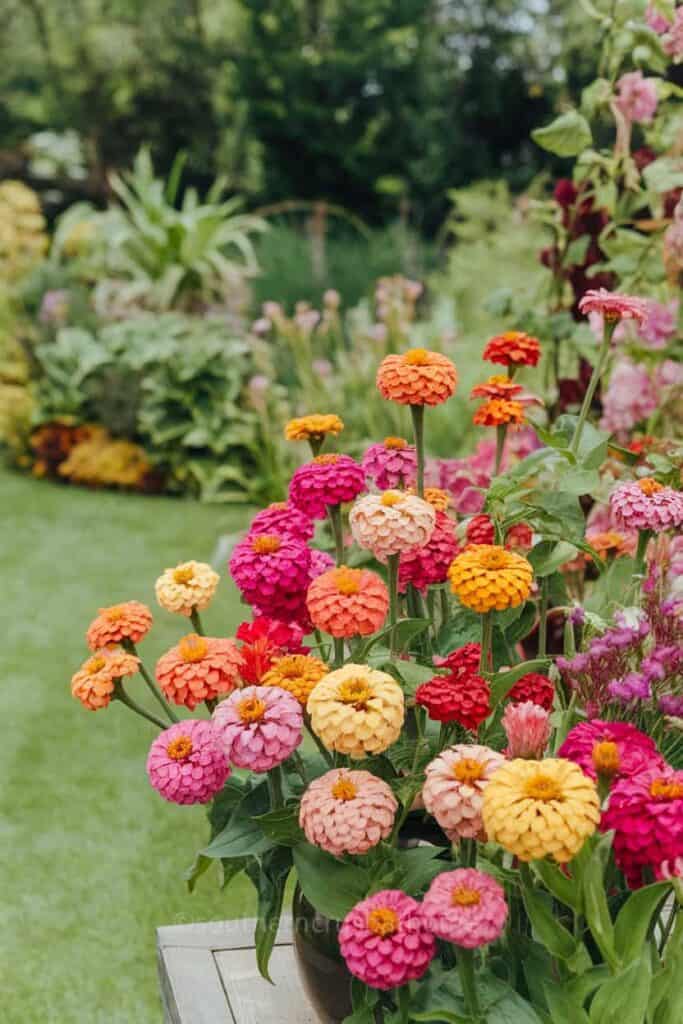
Check the soil quality, too. Adding organic matter like compost can improve drainage and provide nutrients. Mix it well with the existing soil. Don’t forget to check the pH level; zinnias prefer a range between 6.0 and 7.0. You can buy a pH tester at your local garden store.
Once your soil is prepared, you’re set to plant your zinnias. This groundwork creates a welcoming home for those colorful blooms!
Choosing the Right Zinnia Varieties
When it comes to zinnias, picking the right variety makes all the difference. Zinnia flowers bloom in shades of pink, orange, yellow, and white, showcasing their vibrant beauty.

Consider your garden space when selecting zinnia types. If you’re looking for a border plant, opt for shorter varieties. For a bold centerpiece, taller zinnias are perfect. Mixing and matching different types adds depth and interest to your flower beds. Zinnias can grow up to 12-48 inches tall (30-120 cm) and 6-18 inches wide (15-45 cm).
The orange colored zinnias remind me of the marigold which is one other flower variety that I’m able to keep alive!
Don’t forget to check the flowering time. Some zinnias bloom earlier in the summer, while others continue well into fall. This can help you create a garden that is in bloom for a longer period.
Quick Note: Zinnias are non-toxic to dogs and other animals which is yet another reason I love them!
Caring for Zinnias
Zinnias are popular for their hardiness and ability to thrive in a range of conditions. You can choose from different types like the tall, classic zinnias, or the shorter, more compact kinds. Each variety brings its own unique charm to your garden.
Sunlight Requirements for Optimal Growth
Zinnias are sun-loving flowers that thrive in bright environments. The vibrant colors of these blossoms, seen in the image, highlight their need for ample sunlight. For zinnias, a sunny spot is not just a preference; it’s essential for their growth and blooming.
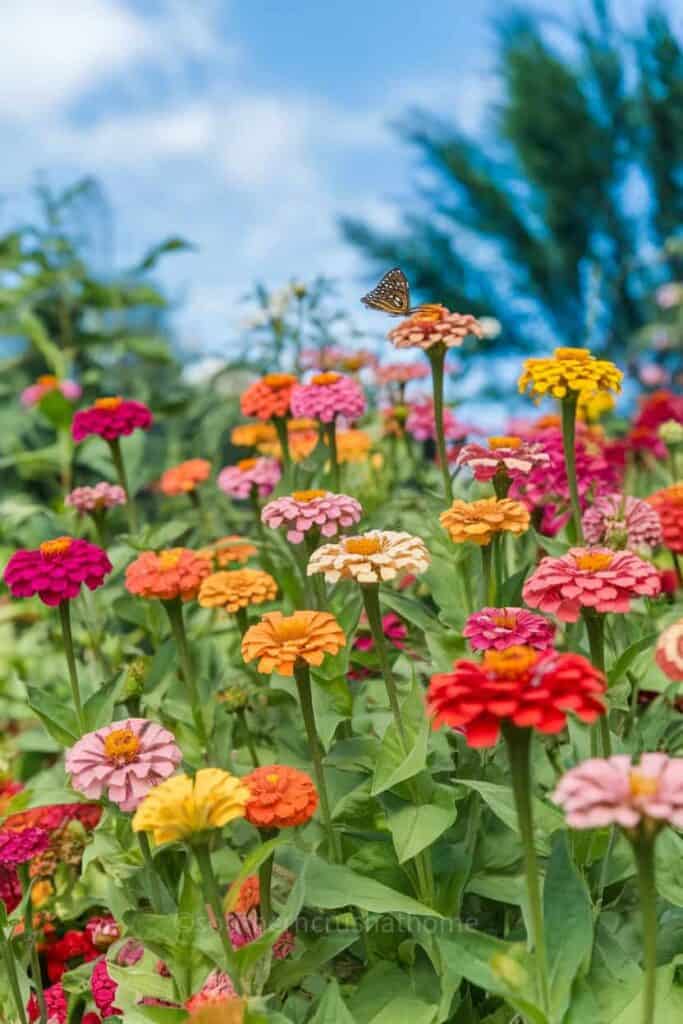
Ideally, zinnias should receive at least six hours of direct sunlight each day. This exposure encourages strong stems and lush foliage, leading to a stunning display in your garden. If they don’t get enough light, zinnias may become leggy and produce fewer flowers.
When planning your garden, pick a location that has a clear view of the sun. Avoid shaded areas from trees or buildings, which can stifle their growth. The image perfectly illustrates how these flowers bask in sunlight, creating a cheerful and lively atmosphere. Happy zinnias will reward you with a burst of color that can brighten any space.
Watering Techniques for Thriving Zinnias
Watering zinnias is key to keeping them healthy and vibrant. Look at the image—someone is gently watering a bed of beautiful pink zinnias. This hands-on approach shows the care that goes into nurturing these lovely flowers.
First off, zinnias love consistent moisture. Water them deeply, but infrequently. This encourages deep root growth. A good rule of thumb is to aim for about an inch of water per week. If it’s particularly hot or dry, you might need to adjust.
Using a watering can allows for more control. Aim for the base of the plants instead of the leaves to minimize disease risk. Misting or overhead watering can lead to mold or mildew.
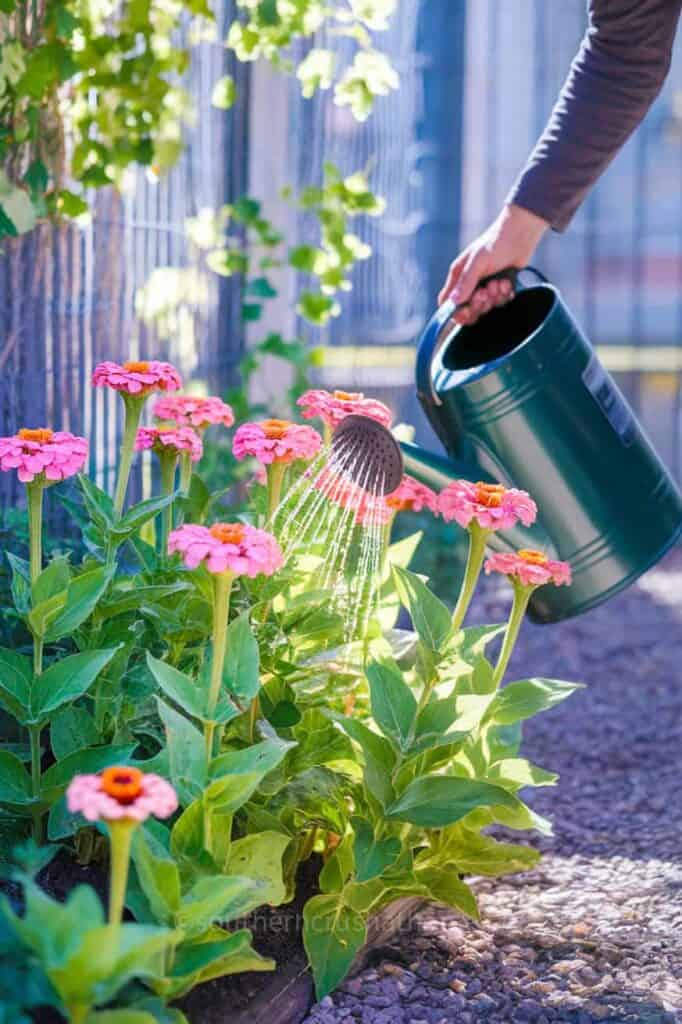
Another tip is to check the soil moisture. Stick your finger in the soil about an inch deep. If it feels dry, it’s time to water. Keeping a schedule can help, but always listen to your plants as they’ll let you know what they need.
Mulching around your zinnias can also help retain moisture. It keeps the soil cool and prevents weeds, which compete for water. With these techniques, your zinnias will thrive and bloom beautifully!
Deadheading Zinnias
This is one of my favorite chores. Deadheading or removing the spent flower heads to help the plant flourish and multiply. I do this to my roses, my petunias and now my zinnias! It’s therapeutic and makes me feel like I know what I’m doing.
Controlling Pests and Diseases
Taking care of your zinnias means watching out for pests and diseases that can harm these beautiful flowers. This hands-on approach helps keep the plants healthy and vibrant.
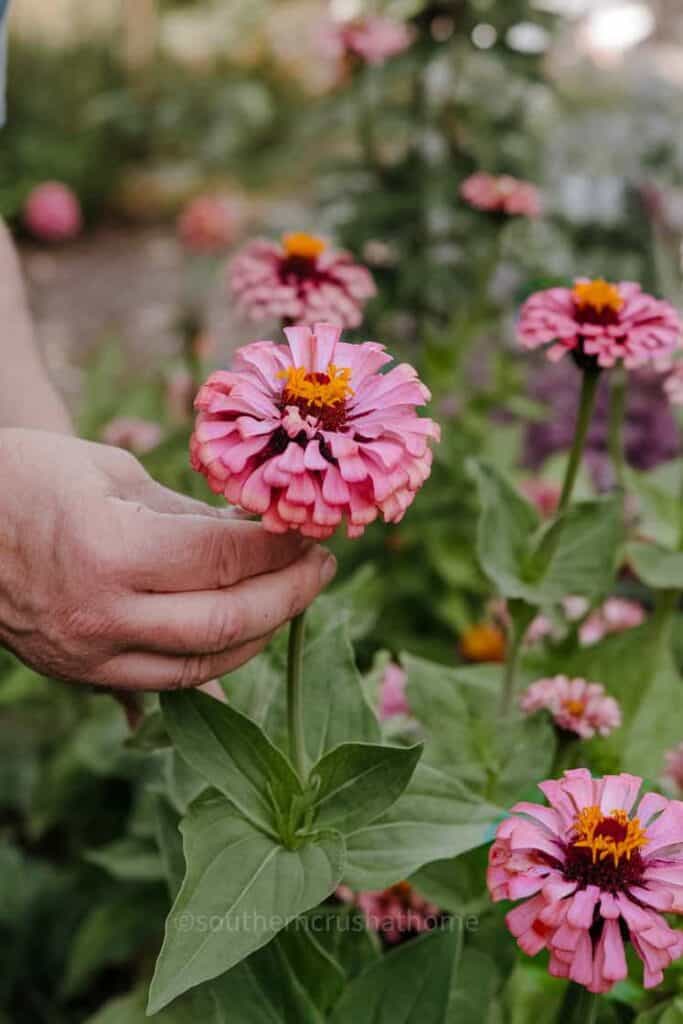
Common pests like aphids and spider mites can quickly become a problem. To control them, regularly check the undersides of leaves. If you spot any, consider using insecticidal soap or neem oil. These are gentle options that won’t hurt your plants.
It’s also important to watch for diseases like powdery mildew. This usually appears as a white, powdery substance on leaves. Ensure your zinnias have good airflow and avoid overhead watering to reduce humidity around the plants.
Using organic mulch around your zinnias can help keep pests at bay and retain moisture. Plus, it looks great! Remember that healthy plants are less likely to attract pests, so keep them well-fed and watered.
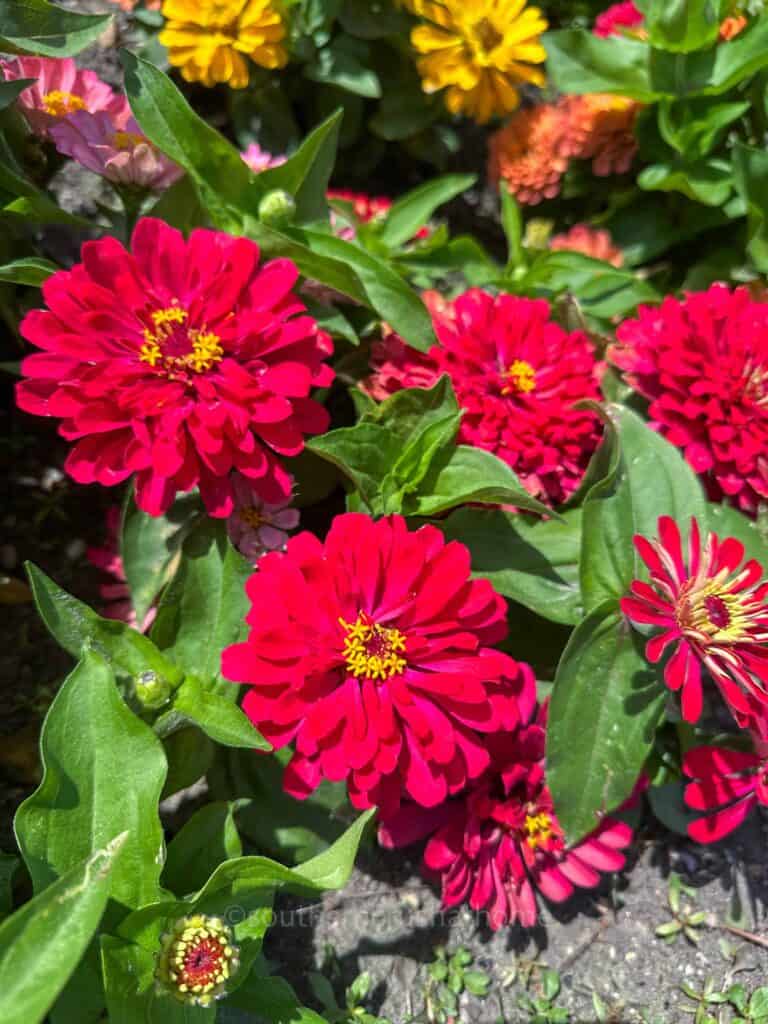
Harvesting and Saving Zinnia Seeds
Harvesting zinnia seeds is a rewarding task that keeps your garden blooming year after year.
To collect zinnia seeds, wait until the flowers have fully bloomed and started to dry out. This usually happens late in the growing season. Gently remove the flower heads and place them in a dry spot for a few days.
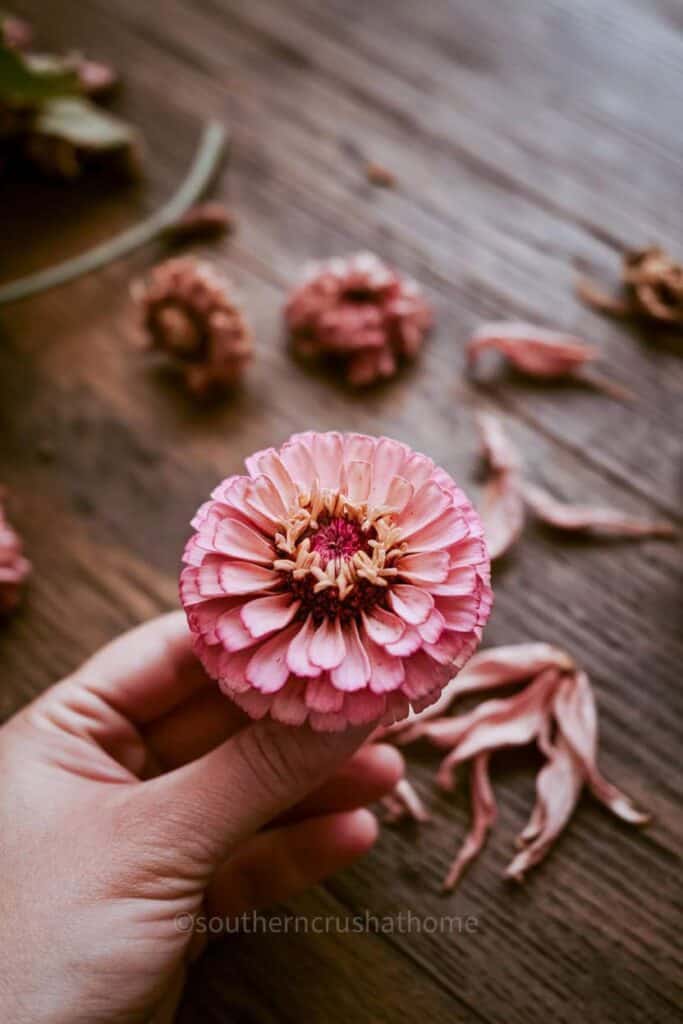
Once they are completely dry, you can easily extract the seeds. Simply break apart the flower heads, and the seeds will fall out. It’s a simple process that lets you preserve your favorite varieties.
Store zinnia seeds in a cool, dry place. Using small envelopes or jars works well for keeping them organized. Label them with the flower type and date to make planting easier in the spring.
Saving zinnia seeds not only saves you money but also allows you to cultivate flowers that thrive in your garden. Plus, it’s a great way to share with friends!
Zinnia Elegans
I love zinnias now! They make me feel like I can grow anything… although, that is yet to be seen. They are sometime referred to as Zinnia elegans known as youth-and-age, common zinnia or elegant zinnia.
Try them out for yourself. Start small, like in a pot or container and then branch out to a section of your flower bed or your yard.
They are an annual flower so they need to be planted every year. So don’t give up if at first you don’t succeed. Try again next year!
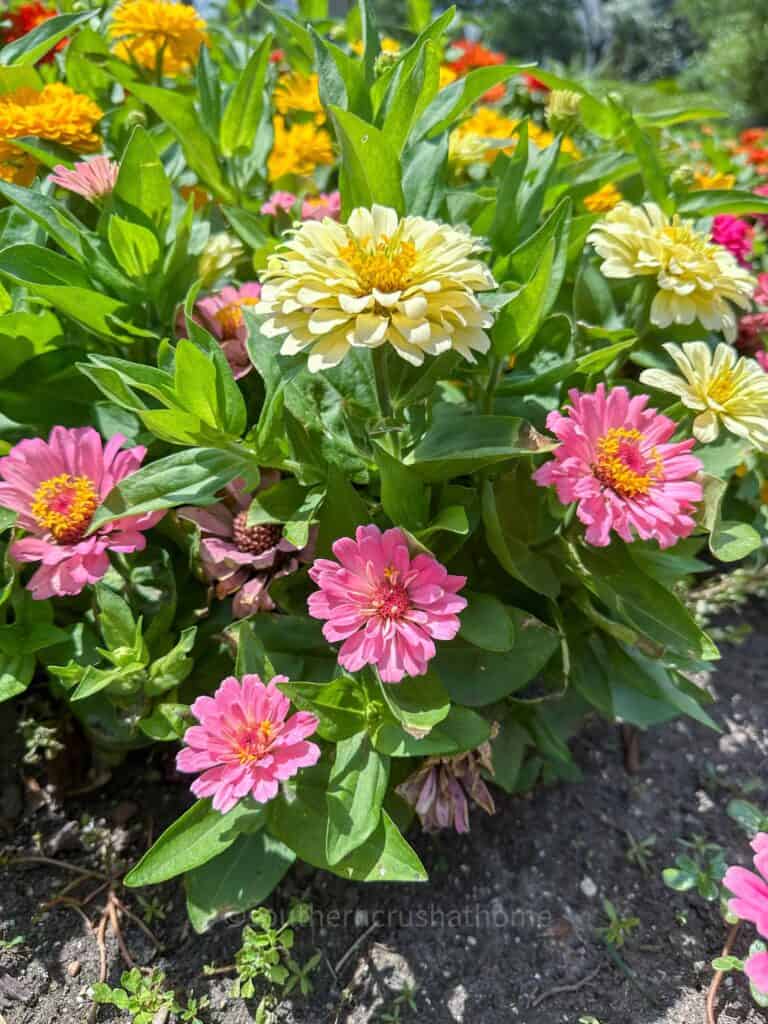
Do Zinnias Have a Special Meaning?
I like to know if flowers symbolize something or have a special meaning in case I want to gift them to someone. The zinnia flower has several meanings including friendship, endurance, daily remembrance, goodness and lasting affection. Take your pick. They are all good.
Zinnia flower varities are what makes them so beautiful. I think the pink zinnia flower is my favorite! All shades, too, hot pink and light pink zinnia flowers. Do you have a favorite color?

